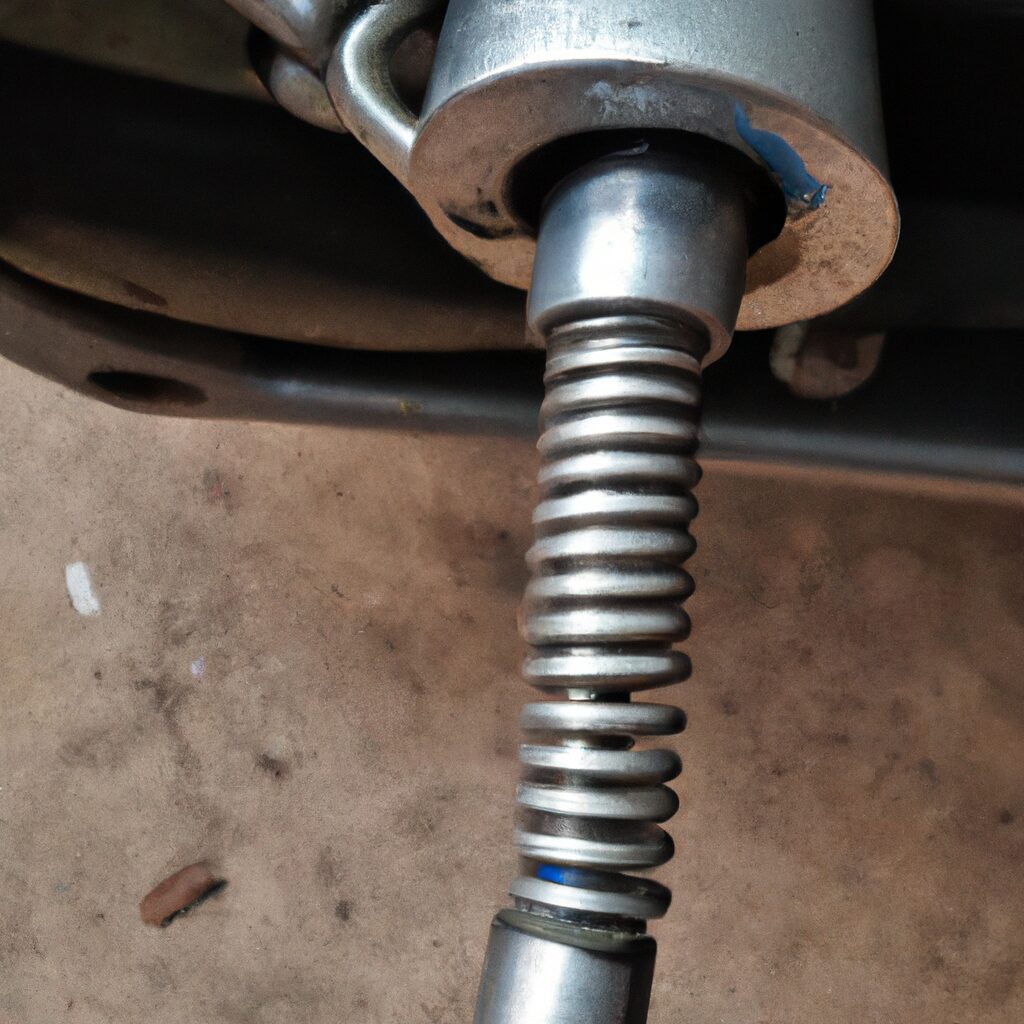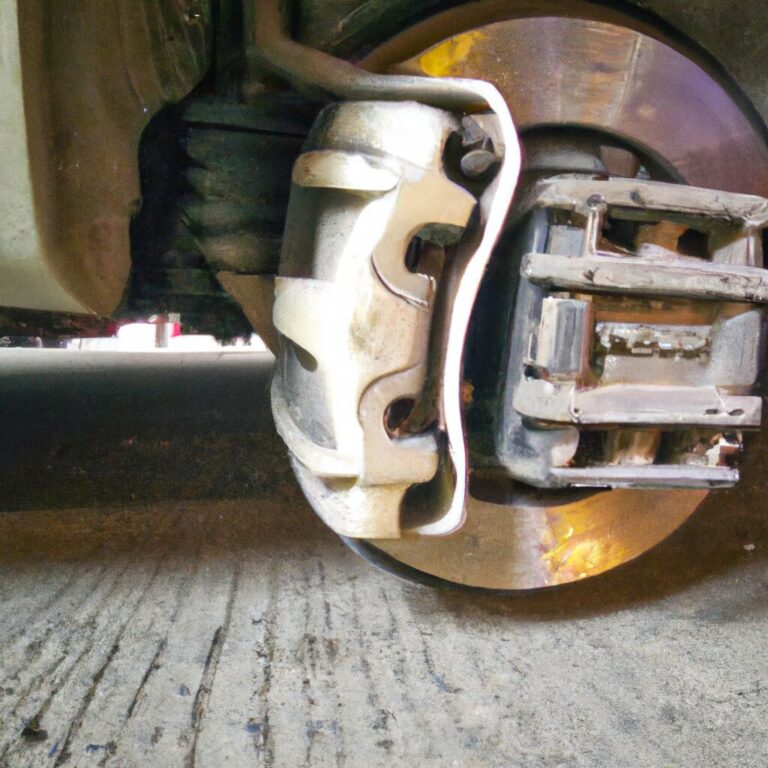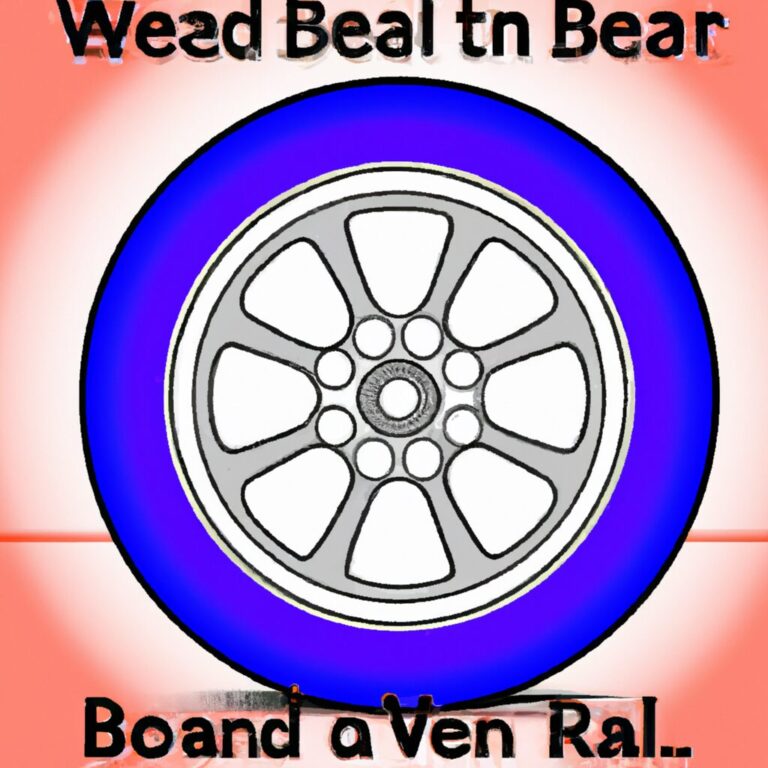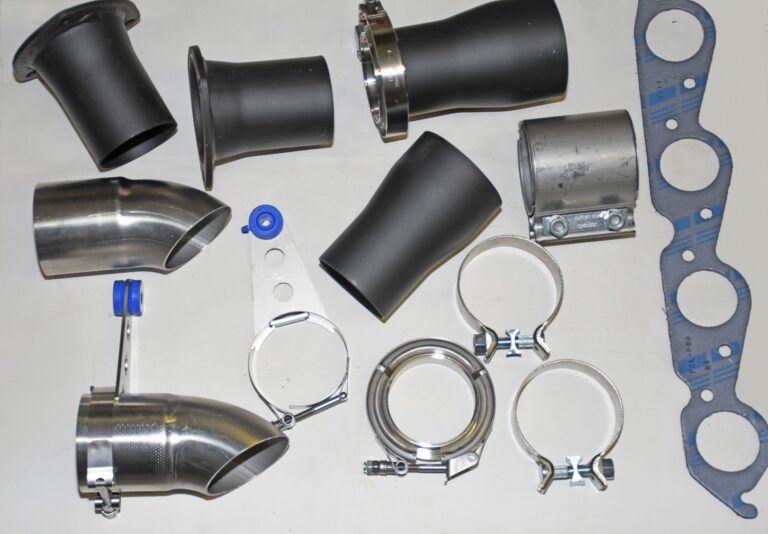what causes bent push rods
Introduction
Bent push rods are a common issue in engines and can be caused by a variety of factors. The most common causes of bent push rods are improper installation, excessive valve spring pressure, and engine wear. Other causes can include improper valve lash adjustment, incorrect valve timing, and even a bent valve. In this article, we will discuss the various causes of bent push rods and how to prevent them.
The Causes of Bent Push Rods in Automotive Engines
Bent push rods in automotive engines are a common issue that can cause a variety of problems. Push rods are responsible for transferring the motion of the camshaft to the valves, and when they become bent, the valves can become misaligned and cause a variety of issues. There are several potential causes of bent push rods, and understanding them can help to prevent future problems.
One of the most common causes of bent push rods is improper installation. If the push rods are not installed correctly, they can become bent when the engine is running. This can be caused by incorrect torque settings, incorrect valve lash settings, or incorrect valve timing. It is important to ensure that all of these settings are correct when installing the push rods.
Another potential cause of bent push rods is engine vibration. If the engine is not properly balanced, it can cause excessive vibration which can cause the push rods to become bent. This can be caused by a variety of issues, such as worn engine mounts, worn engine bearings, or an unbalanced crankshaft.
Finally, bent push rods can also be caused by a lack of lubrication. If the push rods are not properly lubricated, they can become dry and brittle, which can cause them to bend when the engine is running. It is important to ensure that the push rods are properly lubricated to prevent this from happening.
In conclusion, bent push rods in automotive engines can be caused by a variety of issues, including improper installation, engine vibration, and a lack of lubrication. Understanding the potential causes of bent push rods can help to prevent future problems.
How to Identify Bent Push Rods in Your Vehicle
Identifying bent push rods in your vehicle is an important step in maintaining the health of your engine. Push rods are an essential part of the engine’s valvetrain, and if they become bent, it can cause serious damage to the engine. Fortunately, there are a few simple steps you can take to identify bent push rods in your vehicle.
The first step is to check the push rods visually. If you can access the push rods, you should be able to see if they are bent. If the push rods are bent, they will appear to be curved or bent in the middle. If you cannot access the push rods, you can still check for bent push rods by listening for a tapping sound coming from the engine. This tapping sound is caused by the bent push rods hitting against the rocker arms.
The next step is to check the push rods with a feeler gauge. A feeler gauge is a tool used to measure the gap between two surfaces. To use a feeler gauge to check for bent push rods, insert the feeler gauge between the rocker arm and the push rod. If the gap is larger than it should be, it is likely that the push rod is bent.
Finally, you can check for bent push rods by using a compression test. A compression test measures the amount of pressure in the cylinders of the engine. If the pressure is lower than it should be, it is likely that the push rods are bent.
By following these steps, you can easily identify bent push rods in your vehicle. If you do find bent push rods, it is important to replace them as soon as possible to avoid further damage to the engine.
Common Causes of Bent Push Rods in High-Performance Engines
Bent push rods in high-performance engines are a common issue that can lead to serious engine damage if not addressed promptly. Push rods are responsible for transferring the motion of the camshaft to the rocker arms, which in turn open and close the valves. When push rods become bent, they can cause a misalignment of the rocker arms, resulting in a decrease in engine performance and potential damage to the valves and pistons.
The most common cause of bent push rods in high-performance engines is excessive valve spring pressure. When the valve springs are too strong, they can cause the push rods to bend when the valves open and close. This can be caused by using aftermarket valve springs that are too strong for the engine, or by using stock valve springs that have become worn or weakened over time.
Another common cause of bent push rods is improper valve lash adjustment. Valve lash is the gap between the rocker arm and the valve stem, and it must be adjusted correctly in order for the engine to run properly. If the valve lash is too tight, it can cause the push rods to bend when the valves open and close.
Finally, bent push rods can also be caused by a worn camshaft. A worn camshaft can cause the valves to open and close at the wrong time, resulting in excessive valve spring pressure and bent push rods.
In order to prevent bent push rods in high-performance engines, it is important to use the correct valve springs for the engine, to regularly check and adjust the valve lash, and to replace worn camshafts as needed. If bent push rods are discovered, they should be replaced immediately in order to prevent further damage to the engine.
The Impact of Bent Push Rods on Engine Performance
The impact of bent push rods on engine performance can be significant. Push rods are an essential component of an engine, connecting the camshaft to the rocker arms and transferring the motion of the camshaft to the valves. When push rods become bent, they can cause a number of issues that can affect engine performance.
One of the most common issues caused by bent push rods is a misalignment of the valves. This misalignment can cause the valves to open and close at the wrong time, resulting in a decrease in engine performance. Additionally, the misalignment can cause the valves to open and close too quickly, resulting in a decrease in power output.
Bent push rods can also cause a decrease in fuel efficiency. When the valves are misaligned, they can cause the engine to run inefficiently, resulting in a decrease in fuel efficiency. Additionally, the misalignment can cause the engine to run hotter than normal, resulting in an increase in fuel consumption.
Finally, bent push rods can cause an increase in engine noise. When the valves are misaligned, they can cause the engine to run louder than normal, resulting in an increase in engine noise. Additionally, the misalignment can cause the engine to vibrate more than normal, resulting in an increase in engine noise.
In conclusion, bent push rods can have a significant impact on engine performance. They can cause a misalignment of the valves, resulting in a decrease in power output and fuel efficiency, as well as an increase in engine noise. It is important to inspect push rods regularly to ensure they are not bent and to replace them if they are.
How to Avoid Bent Push Rods in Your Vehicle
Bent push rods can cause a variety of issues in your vehicle, including poor engine performance, excessive noise, and even engine failure. To avoid bent push rods, it is important to take the necessary steps to ensure that your vehicle is properly maintained.
First, it is important to regularly check the condition of your push rods. Look for any signs of wear or damage, such as cracks, dents, or bends. If you notice any of these signs, it is important to replace the push rods as soon as possible.
Second, it is important to regularly check the oil level in your vehicle. Low oil levels can cause the push rods to become dry and brittle, which can lead to them becoming bent. Make sure to check the oil level regularly and top it off as needed.
Third, it is important to regularly check the valve clearance in your vehicle. If the valve clearance is too tight, it can cause the push rods to become bent. Make sure to check the valve clearance regularly and adjust it as needed.
Finally, it is important to regularly inspect the engine mounts in your vehicle. If the engine mounts are worn or damaged, they can cause the engine to move around, which can cause the push rods to become bent. Make sure to inspect the engine mounts regularly and replace them as needed.
By following these steps, you can help ensure that your vehicle is properly maintained and that your push rods remain in good condition. Taking the time to properly maintain your vehicle can help you avoid costly repairs and keep your vehicle running smoothly.
The Benefits of Regularly Inspecting Push Rods for Damage
Regularly inspecting push rods for damage is an important part of maintaining a vehicle’s engine. Push rods are an essential component of the engine’s valvetrain, connecting the camshaft to the rocker arms. As such, they are subject to wear and tear over time, and can become damaged if not properly maintained. Inspecting push rods for damage on a regular basis can help to ensure that the engine is running optimally and can help to prevent costly repairs in the future.
The most common type of damage to push rods is bending. This can occur due to a variety of factors, including improper installation, excessive engine vibration, or a faulty rocker arm. Bending can cause the push rod to become misaligned, which can lead to a decrease in engine performance and an increase in fuel consumption. Additionally, it can cause the rocker arm to wear prematurely, leading to further damage.
Inspecting push rods for damage is relatively simple and can be done in a few minutes. First, the engine should be turned off and allowed to cool. Then, the valve cover should be removed and the push rods should be inspected for any signs of damage. If any damage is found, the push rod should be replaced immediately.
Regularly inspecting push rods for damage can help to ensure that the engine is running optimally and can help to prevent costly repairs in the future. It is important to note that push rods should be inspected at least once a year, or more frequently if the vehicle is used in harsh conditions. By taking the time to inspect push rods for damage, vehicle owners can help to ensure that their engine is running smoothly and efficiently.
How to Repair Bent Push Rods in Your Vehicle
Push rods are an important part of the internal combustion engine in your vehicle. They are responsible for transferring the motion of the camshaft to the valves, allowing them to open and close. If the push rods become bent, it can cause a variety of problems, including poor engine performance and even engine failure. Fortunately, repairing bent push rods is a relatively simple process.
The first step is to locate the bent push rod. This can be done by removing the valve cover and inspecting the push rods. If one of the push rods is bent, it will be easily visible. Once the bent push rod has been identified, it must be removed. This can be done by loosening the rocker arm and unscrewing the push rod from the rocker arm.
Once the push rod has been removed, it must be straightened. This can be done by placing the push rod in a vise and gently tapping it with a hammer until it is straight. It is important to be careful when doing this, as too much force can cause the push rod to break.
Once the push rod is straight, it must be reinstalled. This can be done by screwing the push rod into the rocker arm and tightening it securely. Once the push rod is in place, the valve cover can be replaced and the engine can be tested to ensure that it is running properly.
In conclusion, repairing bent push rods is a relatively simple process. By following the steps outlined above, you can ensure that your vehicle is running properly and that your engine is in good condition.
The Role of Lubrication in Preventing Bent Push Rods
Lubrication plays an important role in preventing bent push rods. Push rods are components of an internal combustion engine that transfer motion from the camshaft to the valves. They are typically made of steel and are subject to wear and tear due to the high temperatures and pressures of the engine. If the push rods are not properly lubricated, they can become bent or damaged, leading to engine failure.
Lubrication helps to reduce friction between the push rods and other engine components, which can cause them to bend. It also helps to reduce the amount of heat generated by the engine, which can cause the push rods to expand and become bent. Additionally, lubrication helps to reduce the amount of wear and tear on the push rods, which can lead to premature failure.
In order to ensure that the push rods are properly lubricated, it is important to use the correct type of lubricant. Motor oil is the most common type of lubricant used in engines, and it should be changed regularly according to the manufacturer’s recommendations. Additionally, it is important to check the oil level regularly and top it off as needed.
Finally, it is important to inspect the push rods regularly for signs of wear and tear. If any damage is found, it is important to replace the push rods as soon as possible in order to prevent further damage and ensure the engine runs properly.
By following these steps, it is possible to ensure that the push rods remain in good condition and do not become bent or damaged. Proper lubrication is essential for preventing bent push rods and ensuring the engine runs smoothly.
Q&A
1. What is the most common cause of bent push rods?
The most common cause of bent push rods is improper valve adjustment.
2. What other factors can cause bent push rods?
Other factors that can cause bent push rods include incorrect valve lash, worn valve guides, worn rocker arms, and incorrect camshaft timing.
3. How can I prevent bent push rods?
To prevent bent push rods, make sure to properly adjust the valve lash, inspect the valve guides and rocker arms for wear, and check the camshaft timing.
4. What happens if I don’t fix bent push rods?
If bent push rods are not fixed, it can lead to further engine damage, such as bent valves, broken valve springs, and even engine failure.
5. What are the symptoms of bent push rods?
The symptoms of bent push rods include a rough idle, misfiring, and poor engine performance.
6. How can I tell if my push rods are bent?
You can tell if your push rods are bent by inspecting them visually or using a feeler gauge to measure the gap between the rocker arm and the valve stem.
7. Is it possible to straighten bent push rods?
Yes, it is possible to straighten bent push rods, but it is not recommended as it can weaken the metal and cause further damage.
8. What should I do if I find bent push rods?
If you find bent push rods, it is best to replace them with new ones to ensure proper engine performance.
Conclusion
In conclusion, bent push rods can be caused by a variety of factors, including improper installation, excessive engine vibration, and excessive engine heat. It is important to identify the cause of the bent push rod in order to properly address the issue and prevent further damage to the engine.




